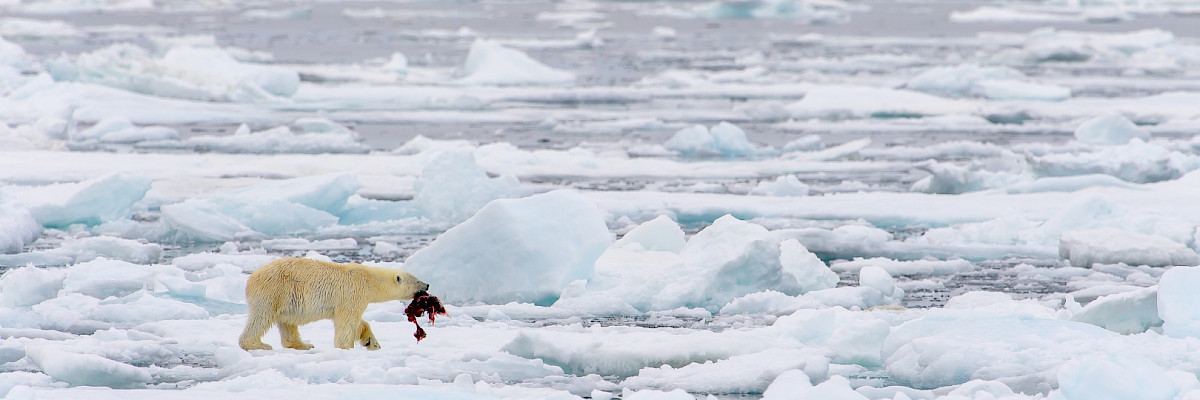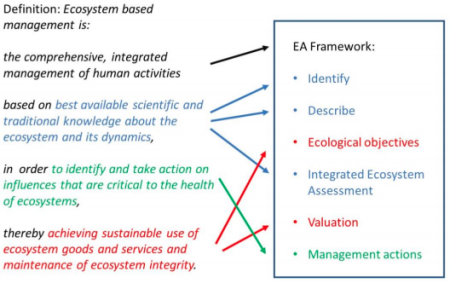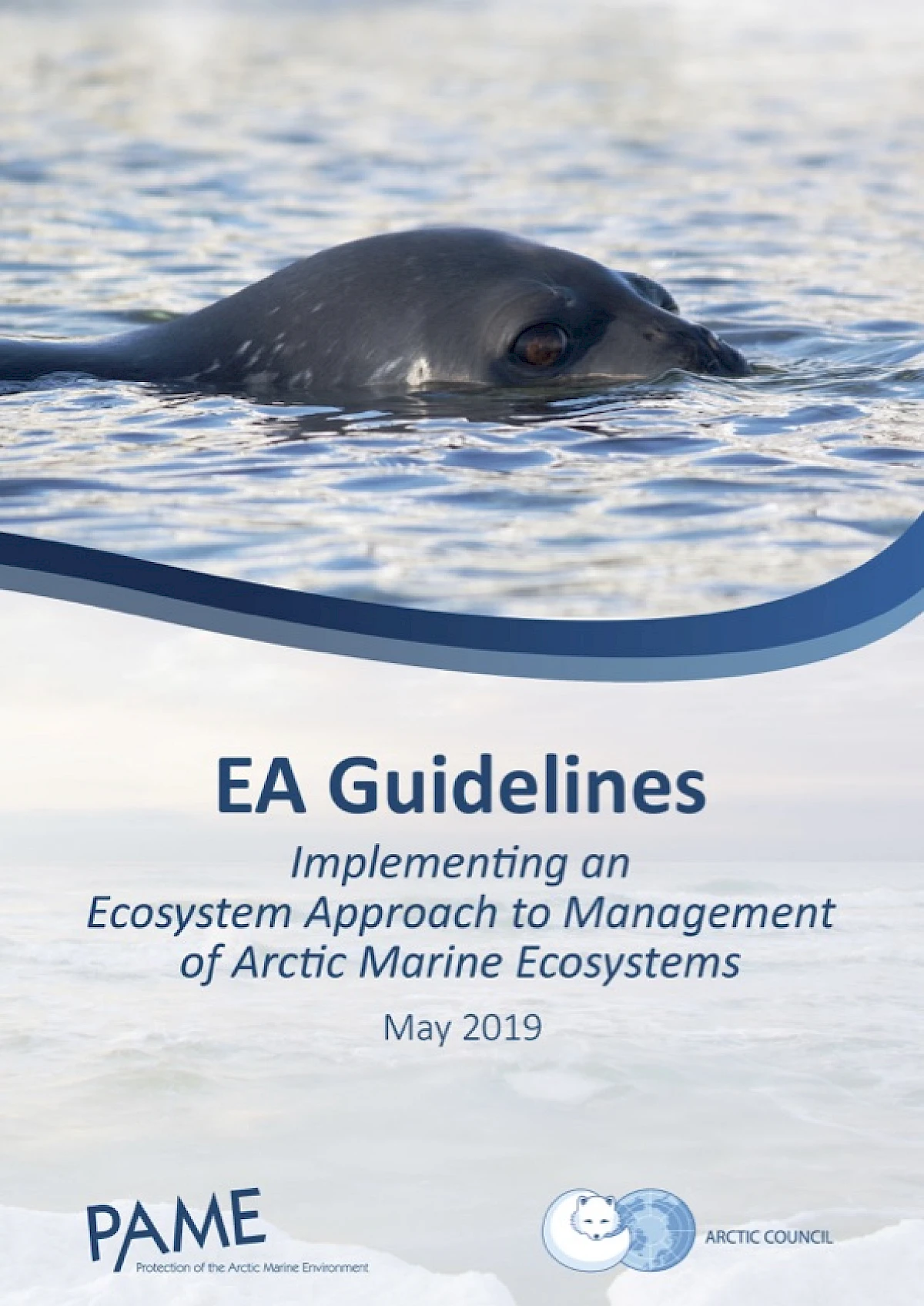
About EA
The concept of the Ecosystem Approach to management (EA) has been around for at least 30 years and has been extensively discussed, elaborated and developed. This approach is known by a number of different names; ecosystem-based management (EBM), ecosystem approach to management (EAM), or simply the ecosystem approach, EA, which is the term used here.
Arctic Council Ministers agreed in 2013 (Kiruna Declaration) to the following definition for EA:
"Comprehensive, integrated management of human activities based on best available scientific and traditional knowledge about the ecosystem and its dynamics, in order to identify and take action on influences that are critical to the health of ecosystems, thereby achieving sustainable use of ecosystem goods and services and maintenance of ecosystem integrity."
This definition has four parts:
- it is explicit about management of human activities;
- it is based on the best knowledge available about the ecosystem;
- the purpose is to make appropriate and effective management decisions; and
- the goal is to ensure sustainable use while maintaining ecosystem integrity.
 Six elements of the Ecosystem Approach
Six elements of the Ecosystem Approach
The Arctic Council has developed a framework for implementation of the Ecosystem Approach to management of human activities in Arctic marine and coastal environments. The EA framework consists of six related elements:
- Identify the geographic extent of the ecosystem;
- Describe the biological and physical components and processes of the ecosystem including humans;
- Set ecological objectives that define sustainability of the ecosystem;
- Assess the current state of the ecosystem (Integrated Ecosystem Assessment):
- Value the cultural, social and economic goods produced by the ecosystem; and
- Manage human activities to sustain the ecosystem.
 While they are numbered, the elements do not necessarily need to be sequential although they are eventually linked in an iterative and adaptive operational management cycle. Monitoring is an essential component of EA as illustrated in the schematic representation of the framework (Fig. 1). Monitoring provides updated information of the status of ecosystem components and human activities and pressures, which is required for conducting an Integrated Ecosystem Assessment. Monitoring and assessment form in turn the basis for advice on the adaptive and responsive management measures needed to maintain or achieve the agreed ecological objective for the ecosystem. When implemented and established operationally, the EA represents an iterative cycle of monitoring, assessment, and adaptive management measures.
While they are numbered, the elements do not necessarily need to be sequential although they are eventually linked in an iterative and adaptive operational management cycle. Monitoring is an essential component of EA as illustrated in the schematic representation of the framework (Fig. 1). Monitoring provides updated information of the status of ecosystem components and human activities and pressures, which is required for conducting an Integrated Ecosystem Assessment. Monitoring and assessment form in turn the basis for advice on the adaptive and responsive management measures needed to maintain or achieve the agreed ecological objective for the ecosystem. When implemented and established operationally, the EA represents an iterative cycle of monitoring, assessment, and adaptive management measures.
The relationship between the six elements of EA and the definition of EA is illustrated in the figure above. The EA is very much a foundation and mechanism for sustainable development, which is reflected in the dual objective of having use without compromising the integrity of the ecosystem.
There is no single way to implement the Ecosystem Approach, as it depends on local, provincial, national, regional, and global conditions. Nevertheless, the common denominators described in these guidelines can provide a framework for delivering the objectives of the Arctic Council and its member countries. There is a dual meaning of “management” in the context of EA. It can be understood in a narrow sense as the sixth element of the EA framework, or in a wider sense as the whole EA framework with all six elements.
IMPLEMENTING EA
In 2011, the Ministers established an expert group on Arctic ecosystem-based management (EBM), which reviewed the EA (or EBM) concept and provided a definition of EA along with principles and recommendations that were adopted as part of the Kiruna Declaration in 2013. In Iqaluit in 2015, and in Fairbanks in 2017, the Arctic Council Ministers recognized the need for EA and requested and encouraged the development of practical guidelines for EA implementation in the Arctic.
The objective of the 6th EA workshop was to scope and start work on development of guidelines for EA in the Arctic. The guidelines presented here are the culmination of the discussions at all of the workshops, and the participation of the scientists, managers, community leaders and representatives of Permanent Participants who attended is greatly appreciated by the Joint EA-EG.
These first guidelines are developed to assist scientists, policy-makers, managers and communities in implementing an ecosystem approach for Arctic marine ecosystems.
PAME continues to work towards EA Implementation.
 Arctic Council Working Group
Arctic Council Working Group 